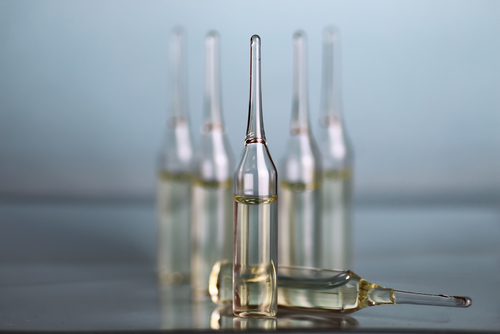Phase 1 Trial of Potential RNA Therapy Fitusiran Shows Promise for Hemophilia A and B

Once-monthly injection of the investigational RNA therapy Fitusiran reduced the levels of the protein antithrombin, a natural inhibitor of several components of the clotting system, and restored the balance of clotting elements production in adult patients with hemophilia A or B.
These findings were featured in the article “Targeting of Antithrombin in Hemophilia A or B with RNAi Therapy” that was published in The New England Journal of Medicine.
Fitusiran, also known as ALN-AT3SC, is being developed by Alnylam Pharmaceuticals for the treatment of hemophilia A and B, and rare bleeding disorders. This investigational therapy was designed to target the protein antithrombin at its site of production, the liver, and inhibit its activity. By doing so, Fitusiran is expected to elevate the levels of the clotting element thrombin, restoring the clotting balance and preventing bleeding events.
This investigational therapy was tested in an international Phase 1 trial (NCT02035605), conducted in the U.S., Bulgaria, Russia, Switzerland, and the U.K. It included four healthy volunteers and 25 participants with moderate or severe hemophilia A or B who did not have inhibitory alloantibodies (in this case, antibodies against hemophilia treatments).
Healthy volunteers received a single subcutaneous injection of Fitusiran or placebo, and hemophilia patients received once-weekly or once-monthly ascending doses of the medicine.
Analysis of the single-dose and weekly administration of Fitusiran had positive effects in lowering the levels of antithrombin protein, which could be achieved and maintained with treatment intervals beyond weekly administrations.
Based on these findings, the researchers evaluated the effects of Fitusiran in a once-monthly regimen. They found that the treatment reduced the levels of antithrombin by approximately 89% at the highest dose tested. This inhibitory effect was sustained between drug administrations, and associated with increased levels of thrombin, as anticipated.
Overall the treatment was found to be safe. However, 36% of the participants had adverse events related to the drug, namely injection-site pain (24%) and injection-site erythema (16%). Moreover, 8% had increased levels of liver enzymes, which could be related to the drug because it targets events directly in the liver. Still, evaluation of this potential adverse event needs confirmation in larger groups.
“The results of our Phase 1 clinical study published in The New England Journal of Medicine support the growing body of evidence to continue the clinical development program for Fitusiran,” John Pasi, MD, PhD, and author of the study, said in a press release. Pasi is clinical director of Hemophilia at The Royal London Hospital Barts Health NHS Trust.
Patients who participated in this Phase 1 trial are now being evaluated in a Phase 2 trial (NCT02554773) to assess Fitusiran’s long-term tolerability and safety. Interim results of this new trial were the subject of an oral presentation titled “Fitusiran, an Investigational RNAi Therapeutic Targeting Antithrombin for the Treatment of Hemophilia: Interim Results from a Phase 2 Extension Study in Patients with Hemophilia A or B with and Without Inhibitors,” during the 2017 International Society of Thrombosis and Haemostasis (ISTH) Congress held in Berlin earlier this month.
“We’ve achieved an encouraging safety and tolerability profile and low median ABRs [annualized bleeding rates] with a monthly subcutaneous dosing regimen, highlighting Fitusiran’s potential to become a differentiated and innovative treatment option for patients with hemophilia,” said Baisong Mei, MD, PhD, senior global project head for Alnylam portfolio at Sanofi.






